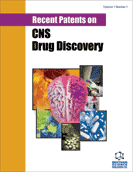Abstract
Copper is essential for life. It plays a pivotal role in the central nervous system, in which a low concentration of copper results in incomplete development, whereas an excess of copper is injurious. Redox reactions are at the basis of copper toxicity: in fact, it catalyses the production of reactive oxygen species in Fenton or Haber-Weiss reactions. Abnormalities of copper homeostasis in neurodegenerative disorders were discovered decades ago. The steady increase in reports from the literature demonstrating copper involvement in neurodegenerative disorders coincides with the improvement, reliability and low cost devices which measure copper markers in biological samples. These devices also demonstrate increasing relevance in diagnosis and in therapy monitoring as well. Methods and new perspectives for the analysis of copper markers status are discussed herein, weighing pros and cons of application to a specific neurological disorder. In particular, it have been introduced three patents regarding a new apparatus for measuring levels of metal in biological samples, employing a current measuring device. A mention of recent patents concerning new derivatives of curcumin has been done considering its metal chelating and multi-functional properties that make these compounds interesting candidates for treatment of some neurodegenerative disorders.
Keywords: Alzheimer’s disease, ceruloplasmin, ceruloplasmin enzymatic activity, copper, copper serum analysis, free copper, neurodegenerative disorders.
 7
7





















